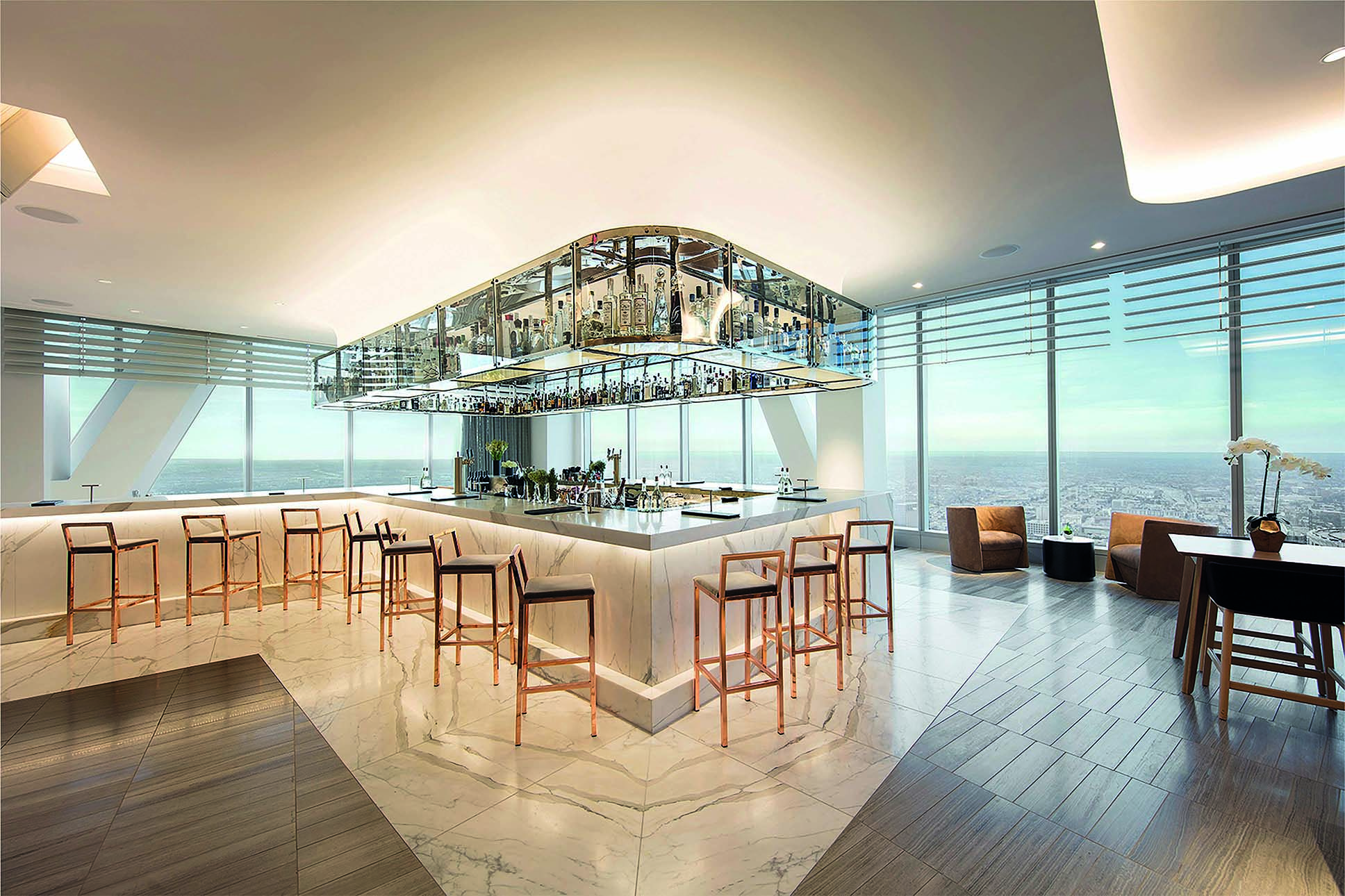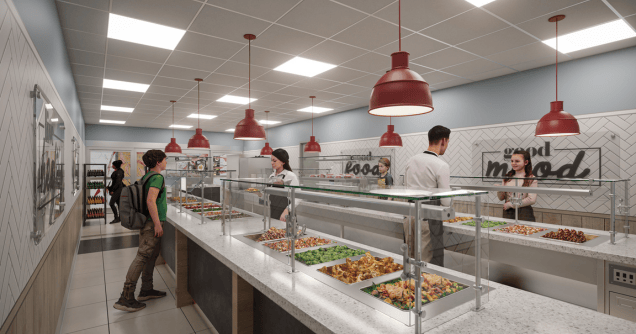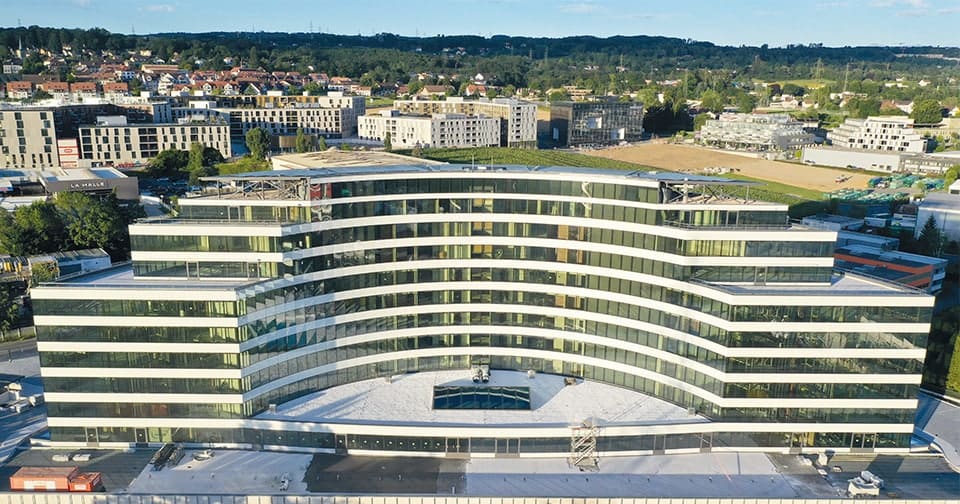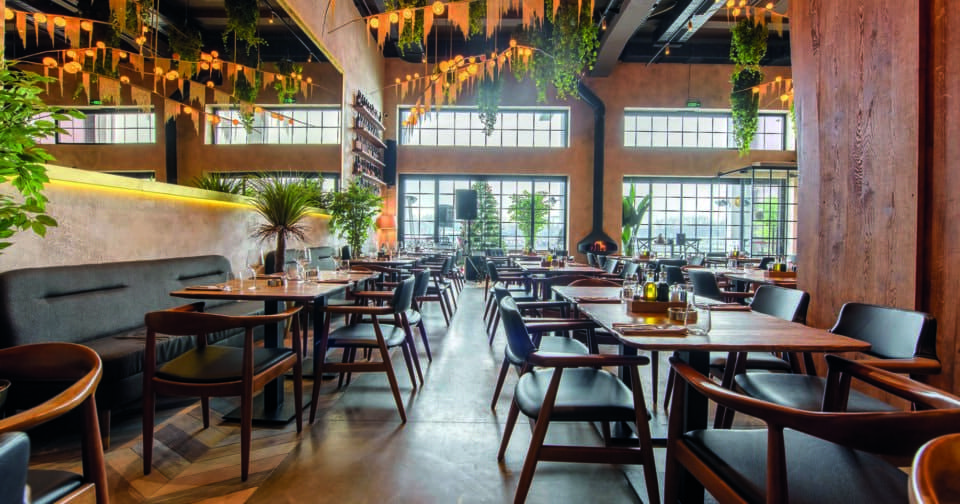
Downtown Los Angeles is undergoing a cultural and economic renaissance and the newly redeveloped Wilshire Grand Center, home to the nearly 900- room InterContinental Los Angeles Downtown, is its newest mascot. Jutting up into the skyline with its signature 175-foot spire, at 1,100 feet, the 73-floor multi-use skyscraper from longtime owner Korean Air and local design firm AC Martin has gained recognition as the tallest building west of the Mississippi and LA’s newest destination.
After nearly 10 years in the planning and four years of construction, the $1.35bn project finally opened to the public last spring. It is Korea’s initial holding of real estate in LA’s skyline, adding to the growing trend of hotel development in the area. “Downtown LA is growing so rapidly there is more need for different kinds of hotels, all the way from boutiques to high-rise,” says senior associate of FCSI Carri Sullens , design studio manager of Cini-Little International, the foodservice consultancy retained for the project, who is seeing a high demand for older hotel and building remodeling.
Way up high
Plans for the redevelopment initially consisted of two towers: one holding the same hotel and office lease space program as the current tower with the other one dedicated to residential space. At this time Cini-Little had been retained by AC Martin to do the foodservice as well as the laundry and solid waste programming. By 2012 those plans were scrapped in favour of the current single tower due to city parking tower limitations. A hotel operator had still not come on board – and wouldn’t until 2015. Although this wasn’t unusual, Kathleen Held, chief marketing officer of Cini-Little explains that because of the timeline of the project and a push to deliver permit documents by summer 2014, the Cini-Little team advanced with a design based on where Martin’s team expected most of the programming to be.
Cini-Little’s work on the foodservice elements, all operated by IHG, began 69 stories up, starting with the chef-interactive casual market buffet Dekkadance and sushi concept Sora where guests can eat sushi overlooking the city skyline and its highway arteries below. A sky lobby and vodka lounge greet guests arriving on the 70th floor followed by the fine-dining French steakhouse La Boucherie on the 71st floor (see opening picture). For the view to end all views, Spire 73 offers the highest open-air rooftop lounge and sky deck with breathtaking views across the city. Cini-Little also provided service for a pool bar and coffee bar as well as employee dining and banquet spaces on the podium level.
New neighborhood
“Each of the food venues has its own characteristics and inspirations. However, they all share a unique location, 70 floors above the street,” says Christopher King, design principal at AC Martin. “Often, restaurants at the top of buildings don’t last because they are removed from the life of the street. Here you have a lobby lounge and bar, an all-day dining restaurant featuring a marketplace, sushi bar and full-service coffee and liquor bar, an open-air rooftop lounge and sky deck and a high-end steakhouse and bar. Conceptually, a new downtown neighborhood has been created, 70 floors up.”
For the signature La Boucherie, IHG VP of food and beverage, Americas, Jean Pierre Etcheberrigaray wanted a traditional French steakhouse with a California twist. To achieve this Martin drew inspiration from Marie Antoinette and the California vaquero (cowboy), to blend characteristics of opulence and glamour with a rustic touch. This design extends itself in a charcuterie and cheese cave and a chef’s table made from a split tree. A series of chain lights in one part of the restaurant denotes a helicopter view of the city’s notorious highways. Guests can maintain the city view with the building’s floor-to-ceiling curtain glass wall, an element Cini-Little even kept in the back-of-house. To meet health codes, they added in a 48-in high stud wall as they couldn’t bring the equipment right up to the glass. “This is one of the few support kitchens in the world with such a spectacular view,” says Bowden.
AC Martin’s design of the building dictated that Cini-Little put the central kitchen over the ballroom, which presented a considerable concern. The team solved this with a double slab. Luckily, IHG didn’t come to the table with a plan or assembled concept thereby allowing original programming to continue with slight modifications – including the elimination of an outside pool grill and redesign of the production garde manger and the banquet production zone due to labor union demands. IHG also wanted to have solid charcoal, but there was no way to retool the structural and ventilation limitations.
Los Angeles sits on a fault line so seismic considerations are part of every project. For Wilshire, these considerations for the foodservice program were less intensive. “It was more about planning for structure and weights of heavy and dense pieces of equipment,” says Bowden. The floor had to be reinforced on level 69 to accommodate the pizza oven. “It was more about going into the spaces and defining the structural load.”
Ruling in new design
An effective solid-waste program and strict separation of clean and soiled pathways was key to the project. Cini-Little’s Middle East experience and their expertise in solid-waste design was a big part of why they were retained. “Foodservice and waste work hand-in-hand so identifying critical solid waste elements at the concept phase is essential to the successful planning and flow of the entire operation,” says Sullens.
Recommendations for a solid waste program were driven by the addition of digesters but Bowden says these original design plans were originally put aside. Luckily, they made it into the program as Bowden cites their addition as the most significant impact on sustainability for the project leading to an estimated 30%-40% waste reduction. “Our goal from the early design was to use the digesters to eliminate wet waste going into dumpsters. All leftover waste in the central kitchen, as well as plates, all go through a digester. There’s no wet garbage. We haven’t run the numbers on the savings, but it’s massive with respect to trash haul.” Since California is home to many equipment manufacturers, Cini-Little also specified as much local and energy efficient equipment as possible.
Wilshire is the first skyscraper to break the city’s flat-topped skyline with its signature curved roof. This was possible after the scrapping of a 1958 city ordinance requiring helipads on all skyscrapers for rescue purposes. The city agencies were persuaded that advancements in building standards, technology, engineering and fire-fighting practices have made that regulation obsolete, allowing for the design of the sloping roof and the spire that ultimately gives the building its highest building status. “By including new provisions for a dedicated firefighter’s elevator and onsite water storage tanks among other measures, the Wilshire Grand has paved the way for future designers and developers to help shape LA’s skyline,” says Martin.
Brandy Gonsoulin




